2022 Thermal LIVE™ Technical Program On Demand

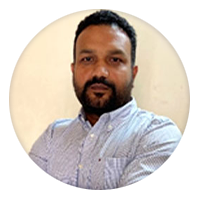
WEBINAR: Extreme Air Cooling for Next Generation Semiconductor Applications
Do you need more out of your air-cooled thermal management systems? Semiconductor applications are becoming more powerful and generating more heat to the point where your air-cooled system may be struggling. Learn design considerations, techniques, and integrated solutions that can significantly improve your air cooled systems to handle higher heat loads and cool more efficiently in these applications. These methods can also enable the same cooling in smaller form factors for more compact thermal management.
Speaker: Parag Sonawane, Director of Product Development, Boyd


PRODUCT DEMO: MAGSIC™, Next Generation Thermal Solution for IGBT Modules
This presentation is intended to help understanding the features of MAGSIC™, latest thermal solution for IGBT from A.L.M.T. Corp. to the potential clients in the world.
As the solutions for global warming and carbon neutrality (decarbonization), electric railways that have excellent energy efficiency are getting attention. We developed a new heatspreader, MAGSIC™ that comes from the combination of Magnesium and Silicon carbide for the power modules that are used for high-speed railways. The thermal conductivity of MAGSIC™ is 230W/(m・K), Almost 30% higher than the conventional material Al-SiC, and only replacing it with MAGSIC™ can be reduced the thermal resistance of the power module by approximately 10%. Moreover, due to its excellent shape stability during the heat cycle, MAGSIC™ can keep superior initial contact for a long time. Therefore, it is expected to contribute to the high performance and long-term reliability of the IGBT modules for high-speed railways.
Speaker: Hwan Lee, Thermal Management Manager, ALMT


WEBINAR: Rather Be Cool Than Dead
All power supplies have operating ambient temperature limits, above which they need to be “derated” or run at reduced power to lower their internal heat dissipation.
The derating point and slope of the derating curve are dependent on many factors, such as the input voltage, the output current, the temperature of the most critical component, airflow and even the orientation of the power supply, to name a few.
Although sophisticated thermal flow modelling programs exist to calculate some of these factors, a real-life test with proven experimental data is more dependable and reassuring to the end customer, who can then reliably work out how far they can push the operating envelope of the power supply in their application without it overheating or going into thermal shutdown.
This webinar explains how RECOM uses a computer controlled wind tunnel to generate accurate, repeatable and authentic derating graphs automatically.
Speaker: Steve Roberts, Innovation Manager, RECOM

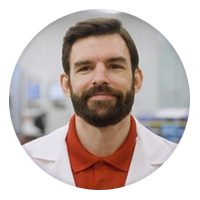
WEBINAR: Enabling Higher Bandwidth and Processing Power through Effective Thermal Management
One of the biggest challenges facing developers of next-generation Data and Telecom systems is thermal management. With devices that enable high bandwidth processing and 5G telecom infrastructure becoming increasingly powerful, heat control is essential to deliver on performance promises. This webinar will present the current market needs and provide information on future design trends as they relate to thermal solutions, including the characteristics and requirements for the ultra-high thermal conductivity Gap Pad Thermal Interface Materials.
Speaker: Blake Wageman, Senior Applications Engineer, Henkel
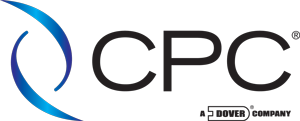

WEBINAR: Material(s) Matter(s) in Liquid Cooling Connectors
As various cooling designs and components evolve, the focus on materials that perform reliably is required. This presentation will provide a summary of metal versus polymer components and how they compare on durability/ruggedness, susceptibility to various types of corrosion, absorption/extraction, dimensional stability, cost, and weight. Various types of metal and plating will be examined along with PSU and PPSU. Presented information will challenge the assumption that stainless steel is always the best, or “safest,” option.
Ultimately, as liquid cooling technology grows in adoption and continues to evolve, the electrochemical nature of the systems necessitates deliberate focus on materials early on in order to ensure long-term performance and reliability. Thermal engineers can be better prepared to not only avoid catastrophic failures but ensure long-term performance and reliability.
Speaker: Emma Miller, Applications Engineer, Thermal Unit, CPC
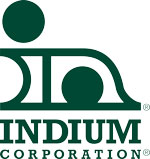

WEBINAR: The Next Generation of Metal Thermal Interface Materials – Liquid Metal Pastes
For many years, metals have been used as thermal interface material (TIM) in the industry. Due to their high reliability and high thermal conductivity, the metal TIMs have been great solutions, especially for the most challenging applications. Thermal conductivity and interfacial resistance are the most important properties of a TIM. One of the biggest obstacles for using metal TIMs in applications is the interfacial resistance. Most of the current metal TIMs are quite stiff and require pressure to form seamless connection between materials and surfacing, to lower interfacial resistance. With devices becoming smaller, consuming more power, and producing more heat, finding the right TIM becomes one of the most critical steps in any application. Liquid metal pastes (LMPs) are developed to provide an enhanced metal TIM solution that combines high thermal conductivity and lower interfacial resistance, compared to common metal TIM options in the market. Furthermore, it offers additional benefit as it is liquid metal nature but better: it allows low and controlled bondline thickness, can be applied by jetting or dispensing, and a higher viscosity that survive pressure without leaking.
Speaker: Miloš Lazić, Product Development Specialist, Indium Corporation
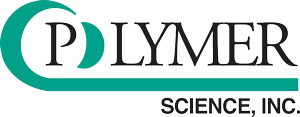

PRODUCT DEMO: Thermal Management in EV Batteries: Why the Use of 2-Part Dispensables Is an Example of When Less Is More
Silicone thermal management materials are commonly used to dissipate heat in electric vehicle applications. 2-part dispensable thermal management products offer low thermal impedance, lower bondlines and lower weight than traditional solid gap pads. This presentation will compare and contrast the two materials and typical applications of each.
Speaker: John Biddle, Vice President Product Development, Polymer Science, Inc


PRODUCT DEMO: Utilizing Boyd Thermosiphon Technology
Join Boyd’s demonstration of Thermosiphon technology and our review of design considerations when developing systems with thermosiphons. Decades of innovation have enabled Boyd to offer lower cost, highly efficient cooling systems featuring thermosiphons. Register to learn more.
Speaker: Alyson Rodgers, Marketing Manager, Boyd
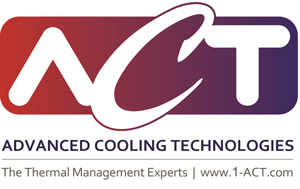
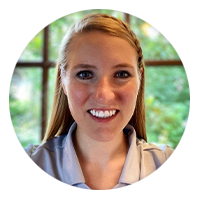
WEBINAR: A Systematic Approach to Cooling in the Energy and Power Electronic Industries
Thermal management with respect to the energy and power electronic industries becomes a balance of understanding the systems waste heat and minimizing the parasitic energy losses. In this webinar we will take a systematic approach to thermal engineering and analyze multiple technologies coupled together to drive the most efficient design. Join us as we dive into solving one of the most demanding and continuously evolving challenges in thermal engineering. Designers looking to enhance passive heat transfer to reduce overall energy consumption will learn about two phase technology, while the system engineers will learn how to ingrate component-based cooling with ultimate heat rejection technique. Viewers will leave with a strong understanding of how to apply multiple thermal technologies to support system cooling.
Speaker: Kimberly Mankosa, Lead Sales Engineer, Advanced Cooling Technologies, Inc.


WEBINAR: Introduction to Carbon Fiber-Orientated Thermal Gap Filler
Thermal gap filler conductivity has increased dramatically over the last 10 years. The ever-increasing power and smaller area have driven the need for higher conductivity thermal gap fillers. In order to increase thermal conductivity, Fujipoly has explored various thermal fillers to achieve ultra-high thermal conductivity. One of those fillers is Carbon fiber.
In this webinar, we will look at the need for higher conductivity materials and how carbon fiber-oriented thermal gap fillers can meet the demand for higher heat flux. Carbon fiber-oriented thermal gap fillers exhibit very low thermal resistance while still offering a highly compressible thermal gap filler. We will explore some of the properties of carbon fiber-oriented gap fillers as well as best practices for implementing them. We will discuss how they can be a great option when more conventional thermal gap fillers are not proving the thermal resistance or compliance needed.
Speaker: Christian Miraglia, Applications Engineering Manager, Fujipoly America-Customer Engineering Resource Center (CERC)
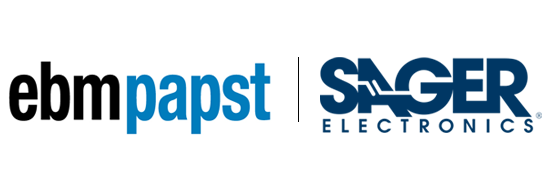


WEBINAR: Grading on a Curve – Selecting the Right Fan for Your Application
Do I need a fan? How do I know which one I need? Are they reliable? Aren’t they noisy? As a global leader in air movement technology, these are questions we hear all the time. Thermal management is a complex topic, so we want to help you understand the key considerations for forced convection solutions as well as address some common questions and misconceptions about fans and blowers. During this presentation, we’ll talk about when and why you may need a fan, which questions we ask to determine the best fan option for any given application, some tradeoffs that may come up along the way, and how ebm-papst’s advancements in motor and aerodynamic technology are helping to alleviate the need for some of these tradeoffs going forward. With some background information, specific data points, and support from industry experts, Sager Electronics and ebm-papst will help you keep a cool head and ace your next air movement challenge!
Speakers: Ben Newton, Application Engineer, ebm-papst and Vineet Barot, Technical Support Manager, Sager Electronics


WEBINAR: Model Based Optimization of Electric Vehicle Power Control Units (PCUs)
On the path towards a decarbonized society, the automotive industry is shifting to electric vehicles worldwide. Power control units (PCUs), which consist of inverters and DCDC converters, convert the battery’s electric power from DC to AC and supplies power to the electric motor. Therefore, PCUs are an important component of electric vehicles, equivalent to the IC engine of gasoline vehicles.
Thermal management associated with the losses generated by power conversion is an important design issue for PCUs. Physics based thermal modeling and simulation can be utilized to identify potential thermal problems early in the design process and develop reliable cooling solutions. The cooling solutions can include for example, the development of a new water-cooling system to deal with the increased losses in power devices, the design of a heat sink that meets the required specifications, and the front-loading design for thermal management of control boards.
By combining the latest technologies in CFD, optimization, and machine learning, it is possible to achieve rapid design space exploration, optimization, and modeling for system level design. More importantly, physics based thermal models allow for digital testing & design optimization even before physical prototypes are available for physical testing. These models can live through the entire design life cycle of the PCU, adding more details & complexity as the design matures. When the design is transferred to production, the same models can be used to respond faster to manufacturing challenges, material supply chain disruptions and other adverse events that may require a redesign of the cooling solution.
Speaker: Sunil Kumar Vytla, PhD, Sr. Applications Engineer – Fluids Design and Engineering business unit Manufacturing Intelligence division, Hexagon
大-2-1.png)
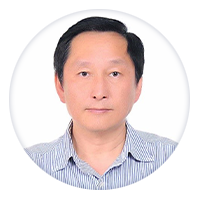
PRODUCT DEMO: Using the Angstrom Method to Measure Effective Thermal Diffused Conductivity of Vapor Chamber
This instrument discusses how to measure the effective radial thermal conductivity of the vapor chamber by using the Angstrom method. The thermal diffusivity of the two ultra-thin vapor chambers VC-D and VC-E developed in the T-Global company are αVC-D=1.9(cm2/s) and αVC-E =1.44(cm2/s). Keff,D=4833 (W/m.K) and Keff,E=3069 (W/m.K) are converted to equivalent effective thermal conductivity, which is about ten times that of pure copper.
In order to prove the Angstrom method’s accuracy for measuring the effective thermal conductivity of the Vapor Chamber, one may penetrate vapor chambers D & E with a sharp screwdriver and expel all the water out of the chamber, hence, these two vapor chambers were thus become to be two copper plates, measure the thermal conductivities of these two copper plates again, the K value we get were 370.18 (W/m.k) and 379.8 (W/m.k) respectively, and that was quite close to the pure copper mater K value 400(W/m.k). The repeatability error of the experiment data is less than 5%, and the accuracy error is less than 10%.
Speaker: Professor Emeritus William Lin Wei-Keng, Chief Technology Officer, T-Global Technology
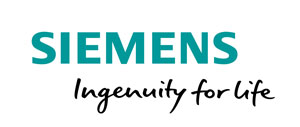

WEBINAR: Combining CFD, Thermal Test and FEA Analysis In An IC Package Thermo-Mechanical Workflow
To ensure electronics reliability, accurate component junction temperatures and temperature gradients within IC packages are required to be understood. Detailed IC package models, calibrated against measurement, and simulated in a robust CFD environment are able to provide the most accurate 3D temperature data to enable FEA thermo-mechanical stress simulation.
This session presents a workflow for IC package thermal and thermo-mechanical analysis. It incorporates EDA design information consideration, package thermal model creation within a CAD-embedded CFD environment for electronics cooling analysis, thermal model calibration against measurement for accuracy, and finally a thermo-mechanical analysis. The example workflow has a focused section on how transient temperature data generated is now more easily generated and transferred for use in FEA analysis environment to simulate thermo-mechanical fatigue and creep.
Speaker: Tim Brodovsky, Technical Application Specialist, Siemens Digital Industries Software